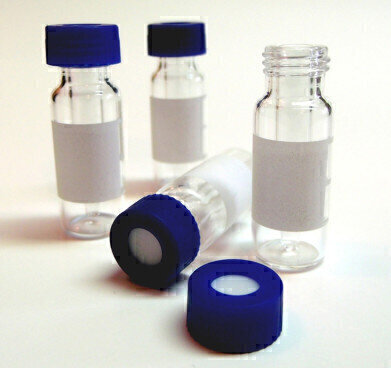Environmental laboratory
Low Adsorption Autosampler Vials
May 11 2016
Supelco’s Low Adsorption (LA) vials are manufactured using a process that decreases the number of hydroxyl groups on the vial's glass surface, significantly reducing surface activity while improving analytical quantitation and minimising pH shifts in the sample. This same process also removes unwanted surface metals such as sodium and boron that can contaminate samples and interfere with trace analysis. Unlike other methods used to decrease vial surface activity, the elimination of surface activity in LA vials is integral to the manufacturing process and is not a chemical surface treatment.
Vial Attributes
The vials, caps, and septa that come in contact with the sample are a critical component of a successful analysis. There are several factors to consider when selecting an autosampler vial.
- Lack of Interference – The vial and closure must not interfere with the sample being analysed. They should not leach out any chemicals, change the pH of the sample, or adsorb the sample
- Proper Fit – The vial and closure must fit into the autosampler perfectly. The vial/closure opening must be in the same place during each injection or the needle will be damaged. Needle damage causes wasted instrument downtime.
- Good Seal – The closure must seal properly to protect the contents and prevent evaporation. Some closures do seal better than others. However, choice of closure depends on volatility of the sample, duration of storage and analysis, and ease-of-use.
- Correct Septum Must Be Used – The septum must be inert and work with the needs of the analysis. If it is used for multiple injections, it must re-seal correctly. It must not core when a blunt needle is used. It should be soft or have a slit if used with a fine gauge needle.
Component Testing
The vial system consists of three main parts: vial, septum, and cap. Extensive testing is done to confirm the specifications for each product are met.
- Vials – Only Type 1 borosilicate glass is used to make Low Adsorption products. Clear vials are produced from Grade A, 33 expansion glass. Amber vials are produced from Grade B, 51 expansion glass because 33 expansion glass is not available in amber. Tight tolerances on all critical physical specifications are controlled to make sure the highest quality is delivered each time. These specifications include height, diameter, neck thread, and bottom thickness.
- Septa – Our septa are post-baked to provide the lowest level of extractables in the industry. The softness is measured for batch to batch consistency. All bonded septa are measured to certify bond strength reliability. The PTFE/silicone and modified PTFE/silicone septa are manufactured, conditioned, and then tested by GC/MS to ensure they have the lowest level of extractable in the industry.
- Caps – Our caps are made from the finest grade of plastic available. Plastic components are manufactured using virgin resin that is tested for low levels of contamination. In addition, caps are molded and batch measured to ensure fit, thread specification, and overall dimension.
View the low adsorption vial product list.
Digital Edition
IET 35.2 March
April 2025
Air Monitoring - Probe Sampling in Hazardous Areas Under Extreme Conditions - New, Game-Changing Sensor for Methane Emissions - Blue Sky Thinking: a 50-year Retrospective on Technological Prog...
View all digital editions
Events
Apr 10 2025 Beijing, China
Apr 10 2025 Beijing, China
Apr 10 2025 Beijing, China
Apr 21 2025 Shanghai, China
Apr 22 2025 Hammamet, Tunisia

_(4427399123)-(2).jpg)

















